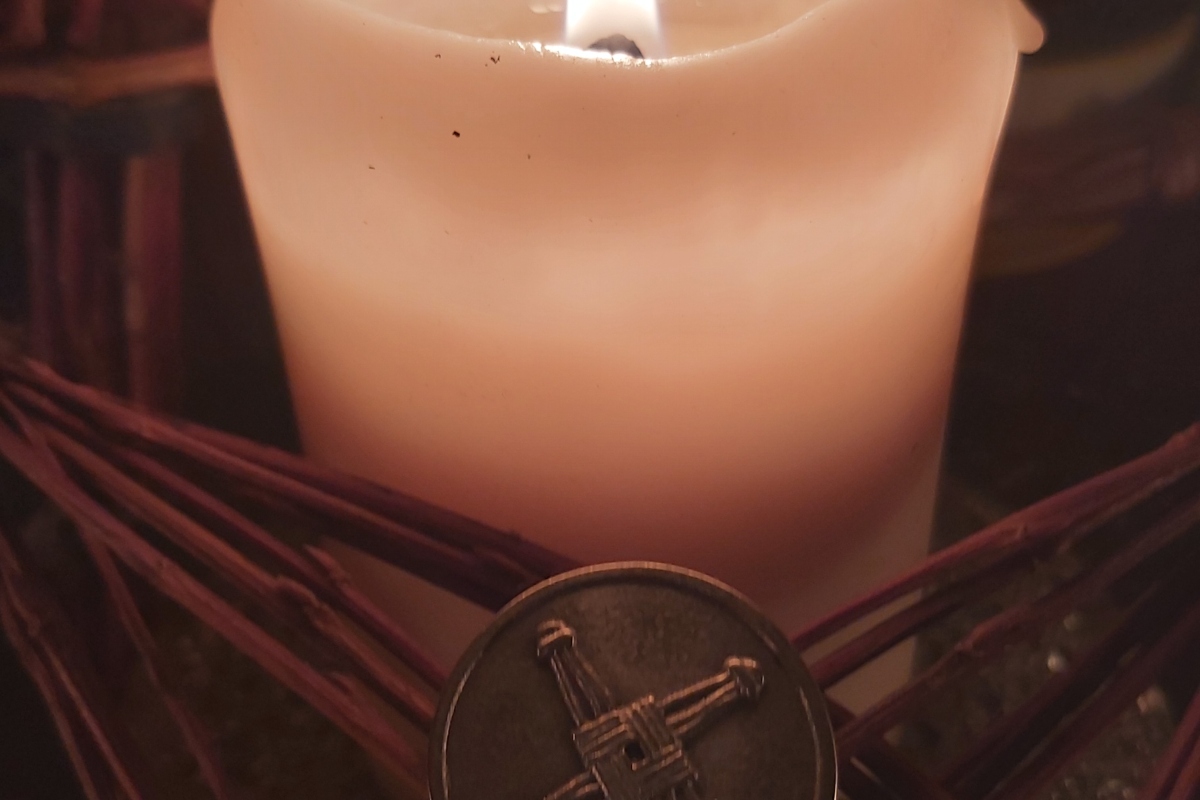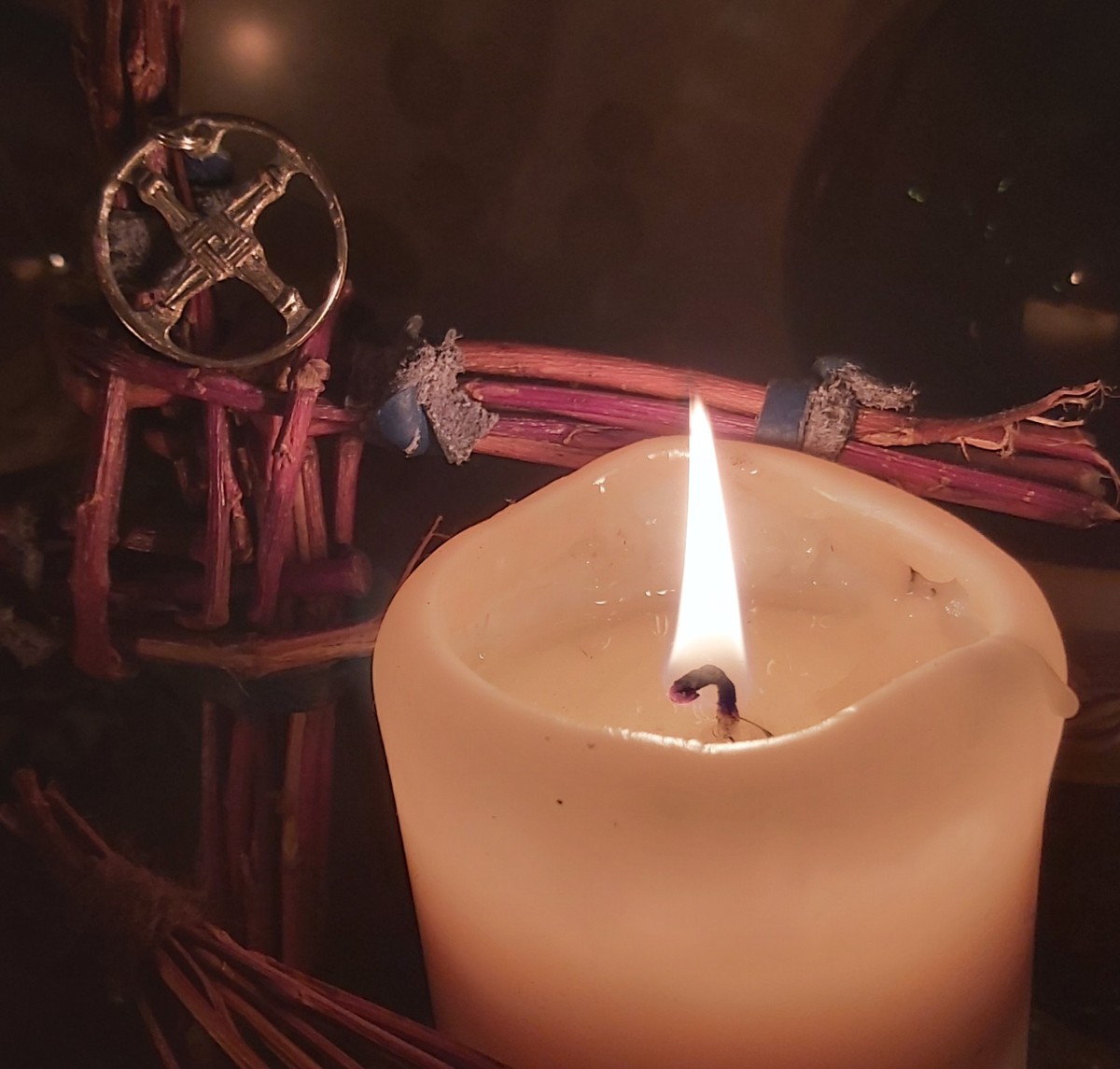
When we look at the goddess Brigid in her many forms and under plethora names we might spot that, as a goddess of fire, birth and forge she is a deity well acquainted with transformation.
One transformation that you might not associate, at first, with Brigid is that of milk to cheese. Yet, integral, and integrated for our ancestors, to Imbolc, Brigid’s fire festival, was the generation of the first milk of the year.
Many animals time their reproductive cycles so that their young are born for the coming of spring. Well, often a few weeks before the grass begins to grow again, allowing for the last of the fat stored over winter to feed the animals’ milk production.
Imbolc is often cited as coming from Irish Gaelic and means ‘in the belly’. This refers to the lamb bearing fullness of the ewes bellies.

So how does a goddess of fire have her big festival be linked to sheep farming? Well, the goddess we know as Brigid is likely wearing a more recent name and links through to much older goddess names. Scholars think Brigid, with her panacea of skills and seasonality, has come from an ancient form of mother goddess who’s nature was forgotten but rewritten several times since time immemorial. Brigid likely became a fire deity via being a solar deity and a forge and fertility deity through being an animistic principle of the landscape.
Some historians would suggest that her form wore the name Lassar, an ancient deity associated with both fire and ewes. Lassar herself is linked in to another goddess form; the goddess Crobh Dearg (Red Claw) and a pilgrimage site by the same name (Cathair Crobh Dearg) is also linked to Anu. Anu being Danu. Danu being the mother of the Tuatha de Danann and of very ancient origins.
Brigid may well be Danu wearing the skin of a blacksmith and a saint.
You’ll notice that I’ve been a bit vague on my sources and my conjecture. That’s because I want you, if curious, to research it a bit yourself and come to your own conclusions.
Brigid is pretty awesome as she is, regardless of any older personas. Yet I feel that personal gnosis and historic precedents are good bedfellows in the realm of understanding.
But I digress. Ewes bearing lambs is a big thing for Imbolc and not all sheep are the same.

Sheep of old
Modern varieties of sheep, as found in the british countryside, are incredible wool producing creatures with a tasty reputation to boot.
Yet, ancient sheep were mainly raised for meat, milk and hides.
This process began some 11000 years ago in ancient Mesopotamia when wild species of Mouflon were domesticated.
Primarily wool producing sheep varieties were only bred in to being around 6000 years ago. Before this the majority were self shearing varieties which shed their wool as the seasons changed.
Many of these ancient sheep breeds,as looked upon by our herding and hunting ancestors have survived through being well adapted to remote areas of northwestern Europe. Breeds such as the Soay, Hebridean, Shetland, and Boreray.
One ancient breed that has inspired a tattoo design (actual tattoo pending due to covid19 restrictions) is the Manx Loaghtan. I’ll share more in another post once it’s done.
These small ‘primitive ‘ short tailed sheep are impressive creatures despite their relatively diminutive size. When we look upon these mouse brown sheep, which were the main sheep breed of the Isle of Man until the mid 1900s we should be impressed with their hardiness and character, even as we look upon their four to six horned heads.
Ballacosnahan Farm Manx Loaghtans have an account on Twitter that’s worth a follow (@MLProduce) and a purchase from. They regularly post pictures, stories and videos of their brilliant looking sheep and have kindly given me permission to use a few images in this blog.

Having established that ancient sheep meant a lot to our Ancestors and the link to Brigid, it will come as no surprise that eating sheeps cheese is a bit of an Imbolc tradition for many.

While Manx Loaghtans may not be great for milk and cheese there are sheep like the Spanish Manchega breed which are. Manchego is a fabulous sweet but salty sheep milk cheese from the Manchega milk, and, it’s commonly available in most supermarkets. This year I’ve bought some Lancashire smoked sheep milk cheese and some Yorkshire Manchego from The Liverpool Cheese Company.
It’s a bit of a tradition in our family to have a little sheeps cheese on Imbolc to honour the time of year, the ancestors and the woolly beasts that have a link to Brigid and to honour Brigid herself.
I strongly recommend you check your local cheese supplier for local sheep cheese, but, if in a supermarket, like Lidl, then try to pick some up and raise a cheese coated oat cracker to a flame haired goddess… or perhaps leave one on the doorstep on Imbolc eve as an offering akin to the oak cake traditionally left for her as she passed by.
I also strongly recommend that you take another look at the Goddess of the fire and forge and see her tending the fire of new life in the belly of the animals without which humanity wouldn’t have survived to reach where we are now. Domestication is a form of co-adaptive evolution and without sheep and their like we wouldn’t be the same as a species.
If you feel inclined to do so, perhaps look again at where you buy your meat, milk and cheese, the welfare of the animals that provide it, and regenerative farming practices that raise them. It’s more affordable than many think to eat a little more ethically and small, more earth-kind businesses deserve rewarding for their work in stewarding the land and creatures that we have relied upon for millennia.










